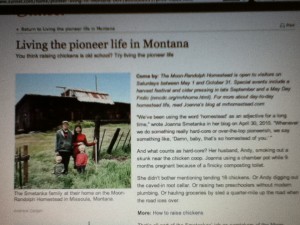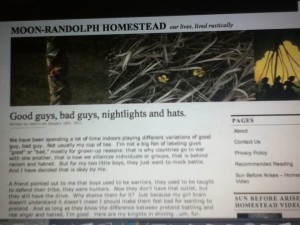On February 8, 2011 I conducted a phone interview with Dr. John C. Anfinson, a former historian and cultural specialist at the National Park Service. Anfinson has been a main fixture at the NPS since 2000 and in December of 2010 he was promoted to Chief of Resource Management for the Mississippi National River and Recreation Area (MNRRA). Anfinson’s journey to his current position with the NPS was as Anfinson calls it “through the back door.”
As a way to put himself through graduate school Anfinson interned with the U.S. Army Corps of Engineers to aid with historic preservation and cultural resource review. Eventually he graduated with his PhD in American History from the University of Minnesota. Upon graduation he was offered a teaching position at South Dakota State University but instead of continuing on the academia route he instinctively chose to stay at the Corps, which had offered him a permanent position. From 1980-2000 Anfinson continued his job at the Corps as a historian with additional duties in cultural management. He explained that he made the position his own by going above and beyond the basic job requirements. His advice to those interested in going into the public history field is to do the same. He advocated pursuing and researching personal topics of interest while integrating it to benefit the organization you work for. This is of course in addition to effectively completing job tasks. He cited this strategy as the way he gradually moved up in both the Corps of Engineers and National Park Service.
During his ten year tenure at the NPS Anfinson’s interests have expanded to environmental and public history. His primary interest is the Mississippi River and has published two books, The River We Have Wrought: A History of the Upper Mississippi and River of History: A Historic Resources Study of the Mississippi National River and Recreation Area in addition to several articles. While Anfinson has responsibilities that come with his title at the NPS, he also has the autonomy to choose his own projects. This in turn enables him to go and speak at professional conferences in a variety of academic fields, all the while representing the NPS.
With a depressed job market Dr. Anfinson suggested those interested in entering the NPS as a historian have at least a Masters degree. Competition for historian positions in the NPS are fierce for those holding Masters and PhDs. Anfinson explained there are several characteristics and qualities that are preferred when looking at job candidates, however three are of the upmost importance. One of these attributes is a competitive edge. The NPS might look for someone possessing an athletic background or participation in some other form of contest that requires tenacity. A second he mentioned was experience, either through a job, internship or volunteerism. Superior grades alone don’t make the cut anymore. Lastly, Anfinson discussed if he were to hire a National Park historian he would specifically look for those candidates who are verse in people skills. The ability to communicate in the workplace with colleagues and in the field with the general public is imperative.
Dr. Anfinson ended the interview with voicing the immense gratification that comes with his work. Last year the National Park Service helped put seven thousand school kids, a majority from the inner city from the Twin Cities, in canoes on the Mississippi River. The program provided education to the children about the history of the river, water quality, and most importantly instilled in them the belief that they are a part of nature, not separate from it.
It seems working for the National Park Service provides the opportunity to straddle two distinct worlds. On one hand it presents the opportunity to continue to research and publish, and on the other it makes available the ability to interact and educate the public in a variety of ways, including on canoes.

